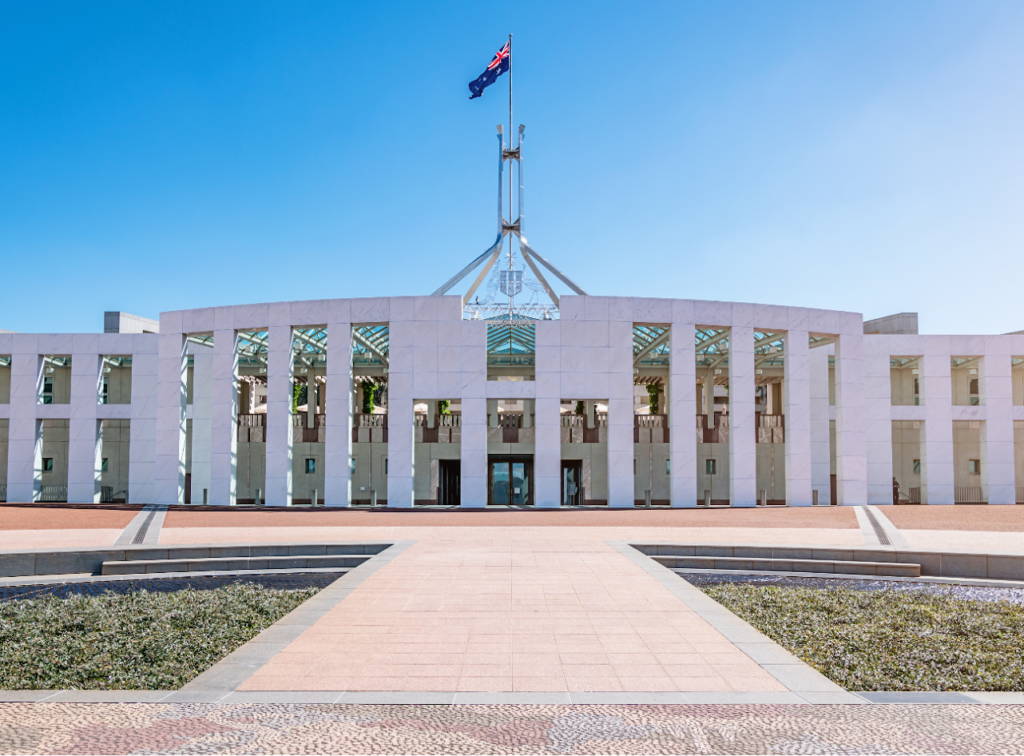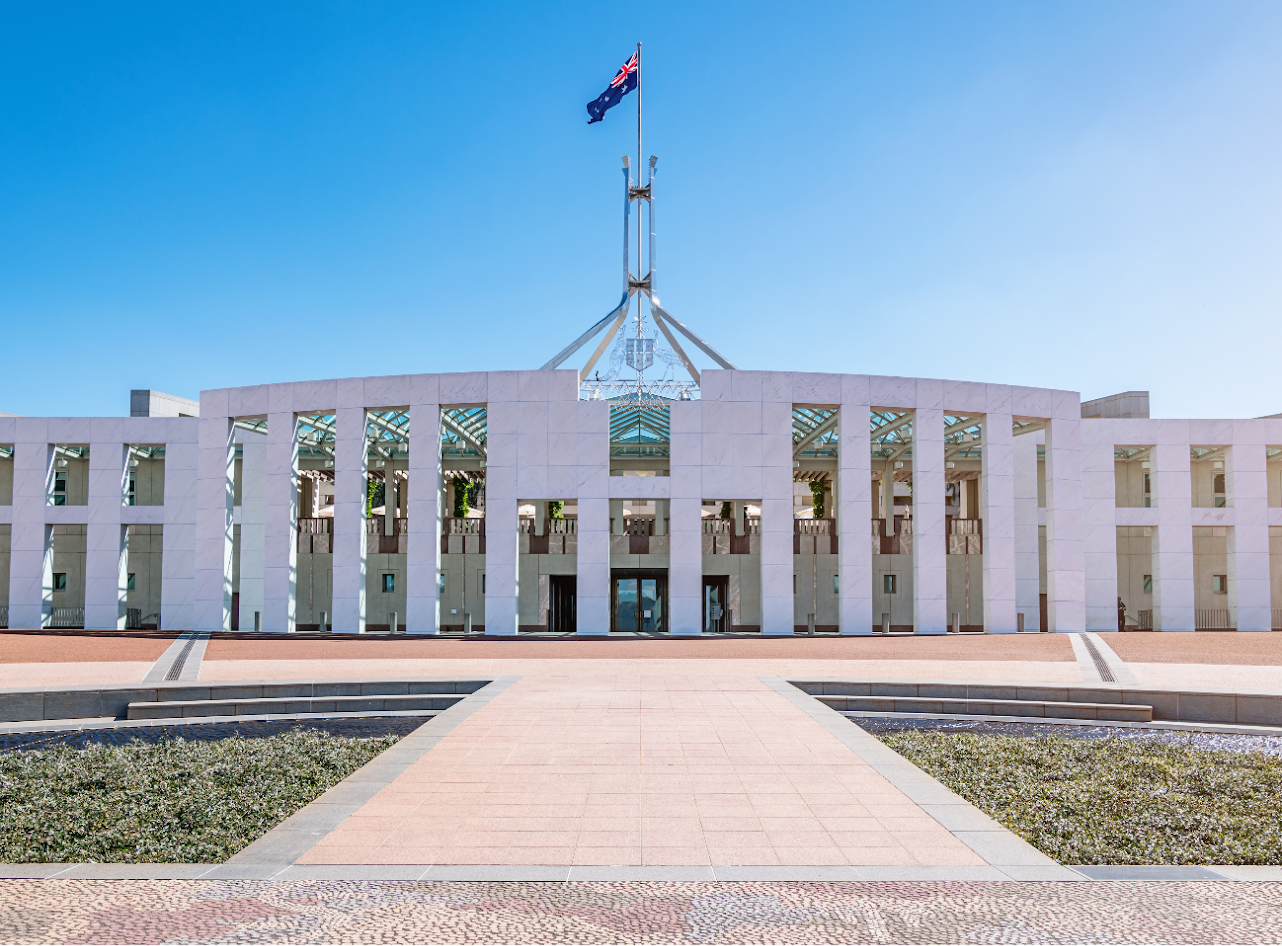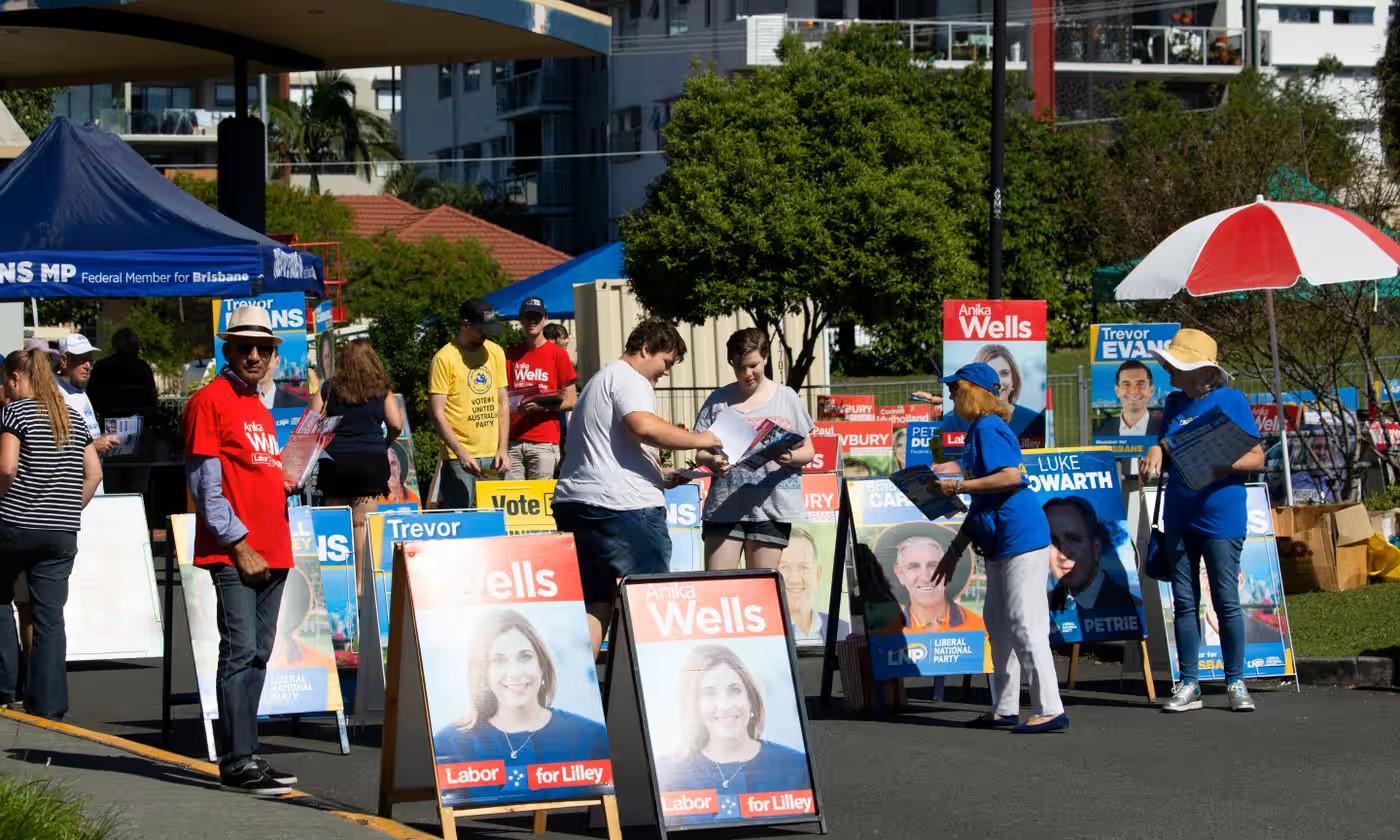Democracy Sausage: Australian Politics Explained
Welcome to the Land Down Under, where kangaroos hop freely, and politics are a fascinating blend of tradition and modern democracy. Contrary to popular belief, Australia is not, in fact, run by kangaroos and koalas. Australia is a democratic nation run by leaders of different political parties who are voted in by the people.
With such a large country and so many variations in regions, socio-economic groups, and people with such different political interests, how is the nation run exactly? Well, here is our breakdown of how politics work in Australia and just who is in control.
Parliament House in Canberra, ACT, where all the magic happens.
The Three Governments
Working from the top down, there are three levels of government that play a different role in our democratic structure.
First, there’s the federal government that oversee the entire country. They keep Australia running from a global perspective. Then, there’s the state government. This is the level of government that takes care of each state and territory within the country and is part of keeping entire regions functioning efficiently and fairly. Finally, there’s the local government. This consists of local politicians and councils that take care of localised communities and ensure your local infrastructure and amenities such as libraries, pools, and parks are functioning exactly how you, the people, need it.
The ‘Big Man’ (Or Woman)
At the heart of Australia’s democracy is the Prime Minister, leading the country with policies and decisions that shape national direction. The Prime Minister is the leader of the party (or coalition of parties) that has the most seats in the House of Representatives, one of the two houses that make up the Parliament.
There’s two ‘floors’ in Parliament. The House of Representatives is the lower story, where members are elected to represent their local areas, known as electorates. The upper story is the Senate, which ensures that all states and territories have equal representation.
A typical setup of liberal versus labor outside a polling boot.
Photo by Mike Bowers
What Do the Parties Look Like?
Australia’s political scene is dominated by two major parties: the Liberal Party and the Labor Party. There are smaller parties including the Greens, One Nation, and United Australia, as well as minority groups and independent representatives.
The Liberal Party typically leans towards economic conservatism and free-market policies, similar to the republicans in the USA, while the Labor Party often champions workers’ rights and social equality, similar to the democrats.
Democracy Sausage
Every so often, Australians are called upon to hit the polls (attend the polling booths) to vote for their preferred political parties and leaders. Elections see ‘sausage sizzles’ take place where Aussie voters can pick up their barbequed sausage on bread known as a ‘democracy sausage’ to celebrate the democracy.
Voting is both a right and a duty, with compulsory voting ensuring that everyone’s voice is heard, echoing the true spirit of democracy, which is why you often see great patriotism during voting periods. The democracy sausage is but a perk to make the experience even more worth it, and ads that classic larrikinism that Aussies are famous for.
A humble democracy sausage gets voters to polls all day long
Photo credit to SBS
Australia’s political landscape is a dynamic and democratic arena where the Prime Minister leads, the Parliament deliberates, and the voters decide who will be in charge of leadership. So, next time you hear about Aussie politics, you’ll know it’s as much about teamwork and the importance of voting as it is about policies and power!








